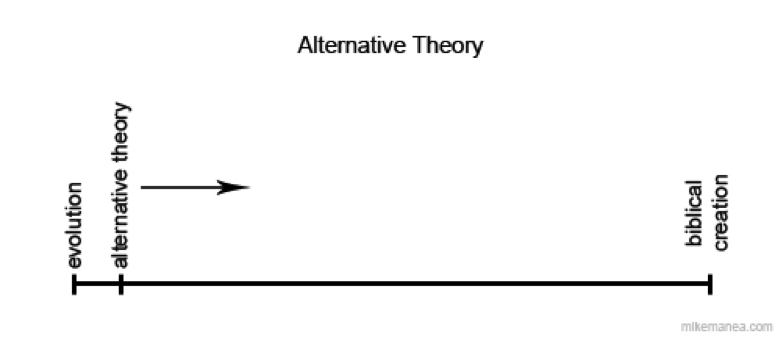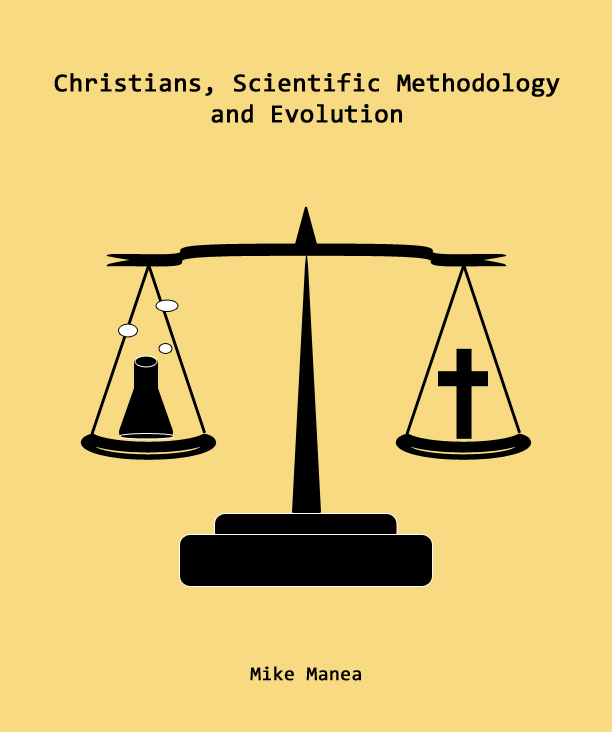A Lack of Competing Models
 While as theists we expect science to be very effective in determining how our universe and everything in it works, we also expect that there will be some discrepancies when it comes to the process by which everything came into existence.
While as theists we expect science to be very effective in determining how our universe and everything in it works, we also expect that there will be some discrepancies when it comes to the process by which everything came into existence.
And, because modern scientists sympathize with science’s naturalistic bias, we have a responsibility as theists both to carefully evaluate scientific conclusions and to look for ways to study alternative options scientifically. In Part 3 I will look at how theists can develop alternative theories that take supernatural causes into account yet stand a chance of being accepted by the scientific community.
Besides the naturalistic bias of science, the lack of alternative models is an additional factor that we need to consider when it comes to evolution. But first let’s clarify exactly what we mean by evolution.
Biological evolution is often defined as “a change in the genetic characteristics of a population over time.” The term, however, can also refer to universal common descent (the development of all living species from an original common ancestor), and it is in this sense that we’re using it here.

The evolutionary process, according to most scientists, begins after abiogenesis (the rise of living organisms from nonliving material). Assuming abiogenesis happens and the first self-reproducing cells develop, evolution takes over from there and is responsible for producing all living organisms that have ever existed, with no intelligent guidance or interference. This is the assumption we are evaluating here. Theists who believe evolution did happen but that it was directed by God are making a claim that is distinct from evolution and would require its own scientific backing.
It is important to also note that while we tend to think of evolution in terms of the development of complete organisms, the real challenge is in the development of the “biological machines” of which these organisms are made. (Although some biologists dislike this term, I am not aware of a better one.) I am referring here to biological structures with multiple components that form complex mechanisms performing specific functions: structures like the human eye. Whenever organisms develop new ways to move about, to sense the environment, to digest new substances, etc., new mechanisms must be developed to accomplish these tasks.
Where Are the Alternatives?
Now let me explain what I mean by a lack of alternative models to evolution. Let’s say scientists are trying to solve a very difficult problem. After several failures, they come up with a hypothesis that seems to work, so they continue their research using that hypothesis. As time passes, other hypotheses are introduced as well, but they are all eventually dismissed, while this hypothesis continues to remain viable. Even though scientists are still a long way from knowing for certain that the hypothesis is correct, the persistent lack of viable competing models becomes itself additional support for the hypothesis. (Keep in mind that creation is never considered as an alternative model because creation is not a naturalistic hypothesis.)
In essence the reasoning goes like this:
- We have a hypothesis that seems to work.
- We have tried numerous other hypotheses and they have all failed.
- The other possibility, Creation, is not a naturalistic hypothesis (not testable) so it is disqualified as a possibility.
- Therefore, since there are no options left, the likelihood that the evolutionary hypothesis is correct is very high.
The best way I can illustrate this point is using Michael Behe’s irreducible complexity. I am not here endorsing the intelligent design (ID) movement and consider irreducible complexity a poorly framed argument. However, during the commotion started by Behe’s book, something very interesting came to the surface in the way scientists argued in favor of the evolution of complex biological machines. Their argument was never in the form of “Here is concrete evidence that these structures could evolve.” Rather, they placed the burden of proof back on the ID proponents and argued that they had failed to provide sufficient evidence that such structures couldn’t evolve. (See this video and the video comments for more details.)
The question we need to ask, then, is whether scientists would be as certain of the evolution of complex structures if they had other mechanisms besides evolution to explain them. In other words, let’s say there was a second theory besides evolution. If scientists knew for sure that this second theory could explain these structures, would they still be as confident that the structures could have developed entirely through evolutionary processes as well?
It is important to ask this question since it tells us whether scientists really know these structures could evolve or whether they just assume they can. Judging by the response given to Behe’s challenge, they don’t actually have concrete, definitive evidence.
There are important aspects of the theory of evolution that have not yet been scientifically verified but are still assumed true for lack of a better explanation. As theists, however, we believe that Creation is another plausible explanation. The only recourse for us, then, is to find a way to study out this possibility scientifically. We need a scientifically valid alternative model.
Previous Efforts by Creationists
Before we get to the solution I am proposing, I want to spend some time discussing some of the steps and missteps taken by Creation scientists in the past.
First off, to be fair, Creationists have tried to introduce an alternative model, not for evolution directly but for the supporting geology: i.e., the flood geology model. I am not going to get into the scientific value of this model here. I do know of several legitimate scientists who believe they have at least some evidence that lines up better with a flood geology model than the standard model. Nonetheless, I believe the likelihood that this approach will work is minimal for several reasons:
- Whatever evidence a handful of Creation scientists can gather, it will have a hard time competing with more than a century of work by tens of thousands of evolutionary scientists.
- The flood geology model contradicts not just the standard geology model but numerous other branches of science. It is very unlikely that the scientific community will be open to a geology model that will require a complete revamping of paleontology, biology, genetics, dating techniques, etc.
- Accepting the flood geology model, although itself possibly a naturalistic model, would require an acknowledgment of the supernatural since there would no longer be enough time for evolution to take place. And this is another thing the scientific community will never do.
- Evolution is a theory that has its roots in biology, although it is supported by the other disciplines. For scientists to take an alternative model seriously, it will need to start with the biology as well. It will need to provide an alternative mechanism for Darwin’s mechanism of natural selection working upon genetic variation.
- Creation scientists have been unsuccessfully trying to introduce the flood geology model for more than a century. Are present-day Creation scientists doing anything significantly different from what has been done before?
- Most importantly, if Creation scientists really believe that, given enough time, they will be able to produce sufficient evidence to make a convincing case, can they at least provide us with a time frame? Or will we still be waiting for them to produce that evidence fifty or a hundred years from now?
Thus, while I am not one to discourage scientists in their work, I personally think there are better ways to address the problem.
Another mistake, in my opinion, has been that Creation scientists have focused on looking for ways to either defeat or displace evolution altogether. This is both unnecessary and next to impossible. What we should be trying to do instead is to come up with a model that, as far as possible, could work side by side with evolution. This will allow us to develop the model without being constantly challenged by evolution supporters.
Along the same lines, we shouldn’t be trying to produce an alternative for the entire theory at once, since this would be too great an undertaking. We should start with something small and get our foot in the door, so to speak. It is OK if, for the time being, we go along with everything else evolution claims except for this one small area we are working on. Instead of trying to come as close as possible to the biblical Creation story, we should go as close as possible to evolution and then take one step back. Once this step is established, we can take another. We should move no faster than it takes us to provide ample support for our current position.

We shouldn’t expect that an alternative scientific model will line up exactly with Scripture, since the nature of science is such that it could take centuries for that to happen. What we should be looking for instead is a scientific theory that is closer to the Creation story than evolution is. At this point our beliefs are being judged by a theory that is at the exact opposite end of the spectrum.
Lastly, I want to mention as well that Creation scientists must realize that the scientific community makes the rules and, if we are going to accomplish anything, we have to play by those rules. They have over many decades proven the effectiveness of their methods and earned the trust of the public as well as the support of governments and courts. Taking our toys and leaving whenever there is some indication of unfair treatment just means that we will lose yet again.
